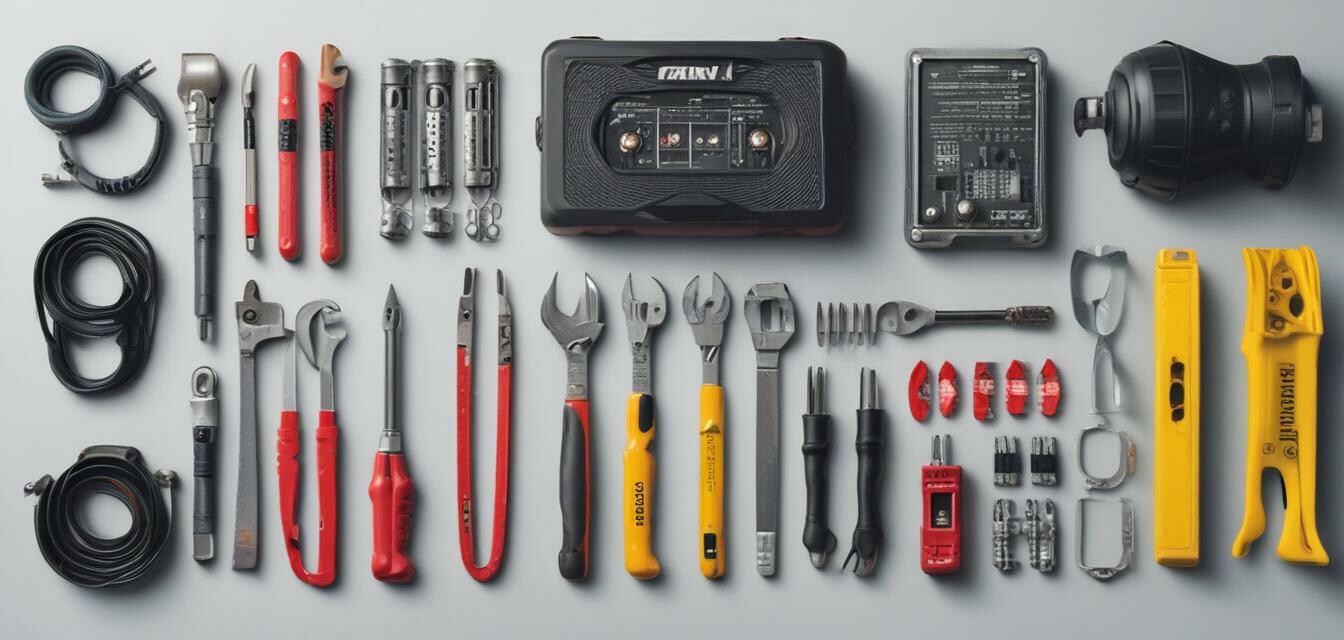
Essential Tools for Effective EV Charger Installation
Key Takeaways
- Proper tools make EV charger installations quicker and safer.
- Always prioritize safety gear during installations.
- Understand the specific requirements for the charger being installed.
- Regularly maintain your tools for optimal performance.
- Training on tools and installation techniques enhances efficiency.
As electric vehicles (EVs) gain popularity, the demand for skilled electricians to install EV chargers is on the rise. Whether you're a seasoned pro or a DIY enthusiast, having the right tools is critical to ensuring a successful installation. This guide details the essential tools required for effective EV charger installation, safety practices, and best approaches to streamline the process.
The Importance of Using the Right Tools
Using the correct tools not only makes the job easier but also ensures that it is done safely. Each tool has a specific purpose, and understanding how to use them can save time and reduce the risk of errors during installation.
Essential Tools Needed for EV Charger Installation
| Tool Type | Description |
|---|---|
| Power Drill | Used for creating holes in walls and securing the charger mount. |
| Wire Strippers | Essential for removing insulation from electrical wires and making clean connections. |
| Cable Organizers | Helps keep wires tidy, reducing the risk of damage and creating a professional appearance. |
| Multimeter | A tool for measuring electrical current, voltage, and resistance to ensure proper connections. |
| Screwdrivers (Flat and Phillips) | Necessary for tightening screws and securing electrical components during installation. |
| Conduit Bender | Used to bend conduit for wire protection, ensuring compliance with local codes. |
| Safety Equipment | Includes gloves, goggles, and hard hats to ensure the safety of the installer. |
Safety Practices During Installation
Safety should always come first during any electrical installation. Here are some essential safety practices:
- Always check local building codes and regulations.
- Ensure proper grounding for the charger to prevent electrical shock.
- Use insulated tools and wear protective gear at all times.
- Turn off the power supply at the circuit breaker before starting any installation work.
- Keep a fire extinguisher nearby to handle any unexpected incidents.
Best Practices for Efficient EV Charger Installation
Here are some tips that can help streamline the installation process:
- Plan Your Layout: Before starting, take time to plan the layout of the installation site.
- Gather Your Tools: Ensure that all tools are easily accessible and in good working condition.
- Consult Manufacturer Guidelines: Always refer to the manufacturer's installation instructions for specific requirements.
- Test All Connections: Use a multimeter to test connections for safety and effectiveness.
Expanding Your Toolkit
As you gain experience in EV charger installations, consider expanding your toolkit with the following additional equipment:
| Tool Type | Description |
|---|---|
| Circuit Analyzer | Checks the health of electrical circuits to identify potential issues. |
| Digital Level | Ensures that mounted chargers are perfectly level for a professional finish. |
| Heat Gun | Used for heat shrink tubing to secure electrical connections. |
| Electrician's Tape | Provides insulation for electrical wiring to prevent shorts. |
Staying Informed
Always stay updated on the latest trends and developments in EV installation technology. Regular training can also help you improve your skills and adapt to new tools and practices.
Frequently Asked Questions (FAQ)
What are the best tools for beginners?
For beginners, a power drill, wire strippers, screwdrivers, and safety gear are essential. As you become more skilled, you can add more specialized tools.
Are there specific safety standards for EV charger installation?
Yes, local electrical codes provide safety standards that must be followed during installation. Always check local regulations.
How often should I maintain my tools?
Inspect your tools frequently for wear and tear; maintaining them regularly ensures they remain in good working condition.
Tips for Beginners
- Start with simple installations and gradually take on more complex projects.
- Practice makes perfect; don't hesitate to seek help from experienced electricians.
- Join online communities or forums for electricians to share tips and ask questions.
Pros
- Having the right tools ensures a safer installation.
- Proper equipment can improve installation efficiency.
- Regular practice builds confidence in using tools effectively.
Cons
- Investing in high-quality tools can be costly.
- Tools require regular maintenance and care.
Explore More!
For additional information and resources, check out our other guides on Buying Guides and recommendations on Tools & Accessory Kits. Also, don’t forget to check our section on Smoke Detectors & Safety Equipment for enhanced safety during your installations.
In conclusion, having the right tools, following safety practices, and staying informed are essential for successful EV charger installations. Equip yourself with knowledge, and never hesitate to seek assistance when needed!